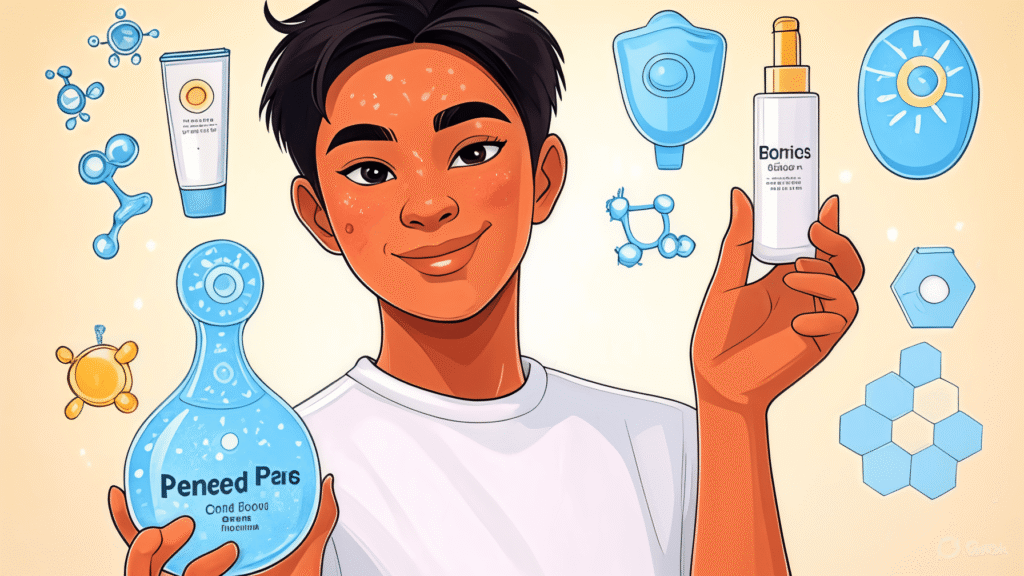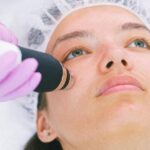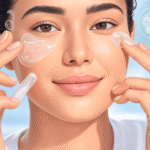Tretinoin, a prescription retinoid derived from vitamin A, stands as one of the most effective acne treatments available today. However, starting tretinoin therapy can feel overwhelming without proper expectations. This comprehensive guide will walk you through exactly what to expect during your tretinoin journey, from the initial application to long-term results.
Understanding Tretinoin: How This Powerful Retinoid Works
Tretinoin works by accelerating your skin’s natural cell turnover process, effectively unclogging pores and preventing new acne formation. As a prescription medication, it’s significantly more potent than over-the-counter retinol products, making it a first-line treatment recommended by dermatologists worldwide.
The Science Behind Tretinoin’s Effectiveness
When applied topically, tretinoin:
- Increases cellular turnover rate by up to 300%
- Unclogs existing comedones (blackheads and whiteheads)
- Prevents new pore blockages from forming
- Reduces inflammation in acne-prone areas
- Regulates oil production over time
- Promotes collagen production for improved skin texture
This multi-faceted approach makes tretinoin effective for various acne types, from mild comedonal acne to more severe inflammatory conditions.
The Tretinoin Timeline: What to Expect Week by Week
Understanding the tretinoin timeline is crucial for maintaining realistic expectations and treatment compliance. Here’s what typically happens during your first few months:
Weeks 1-2: The Initial Adjustment Period
During your first two weeks, your skin begins adapting to tretinoin’s powerful effects:
Common experiences:
- Mild to moderate skin irritation
- Increased dryness and flaking
- Possible burning or stinging sensation
- Heightened sun sensitivity
What’s happening: Your skin is adjusting to accelerated cell turnover. This initial irritation is normal and typically subsides as your skin builds tolerance.
Weeks 3-6: The Tretinoin Purge Phase
The tretinoin purge is perhaps the most challenging aspect of treatment, but understanding it helps maintain commitment to your regimen.
What is the tretinoin purge?
The purge occurs when tretinoin accelerates the lifecycle of existing acne lesions, bringing them to the surface faster than normal. This can make your acne appear worse before it improves.
Purge characteristics:
- Increased breakouts in areas where you typically get acne
- Faster formation and healing of pimples
- No new acne in previously clear areas
- Duration typically lasts 4-6 weeks
Managing the purge:
- Continue consistent tretinoin use
- Maintain gentle skincare routine
- Avoid picking or squeezing breakouts
- Use non-comedogenic moisturizers
- Apply broad-spectrum sunscreen daily
Weeks 6-12: Gradual Improvement Phase
After surviving the purge, most patients begin noticing positive changes:
- Reduced frequency of new breakouts
- Faster healing of existing acne
- Improved skin texture and smoothness
- Less oily skin throughout the day
- Fading of post-inflammatory hyperpigmentation
Months 3-6: Significant Results
Clinical studies show that most patients experience substantial improvement by the 12-week mark, with continued benefits through six months:
- 60-80% reduction in acne lesions
- Noticeably clearer, smoother skin
- Improved skin tone and texture
- Reduced appearance of acne scars
- Enhanced overall skin radiance
Common Side Effects and How to Manage Them
While tretinoin is highly effective, it can cause side effects, especially during the initial treatment phase. Understanding these helps you prepare and respond appropriately.
Most Common Side Effects
Skin Irritation (Retinoid Dermatitis):
- Redness and inflammation
- Dry, flaky skin
- Burning or stinging sensation
- Increased sensitivity to skincare products
Management strategies:
- Start with lower concentration (0.025%)
- Apply every other night initially
- Use gentle, fragrance-free moisturizers
- Avoid harsh scrubs or exfoliants
- Consider the “sandwich method” (moisturizer-tretinoin-moisturizer)
Photosensitivity:
Tretinoin increases your skin’s sensitivity to UV radiation, making sun protection essential.
Sun protection protocol:
- Apply broad-spectrum SPF 30+ daily
- Reapply sunscreen every 2 hours
- Wear protective clothing and hats
- Avoid peak sun hours (10 AM – 4 PM)
- Consider physical sunscreens with zinc oxide or titanium dioxide
Less Common Side Effects
- Temporary hyperpigmentation changes
- Contact dermatitis from increased sensitivity
- Eye irritation if applied too close to the eye area
- Temporary hair texture changes (rare)
Proper Application Techniques for Optimal Results
Correct application is crucial for maximizing tretinoin’s benefits while minimizing side effects.
Step-by-Step Application Guide
- Cleanse thoroughly with a gentle, non-drying cleanser
- Wait 20-30 minutes for skin to completely dry
- Apply pea-sized amount to entire face (avoid eye area)
- Spread evenly using gentle upward motions
- Wait 20 minutes before applying moisturizer
- Apply only at bedtime as tretinoin degrades in sunlight
Different Tretinoin Formulations
Cream formulations:
- Best for dry or sensitive skin
- Contains moisturizing ingredients
- May be less irritating initially
Gel formulations:
- Ideal for oily or acne-prone skin
- Lighter texture, absorbs quickly
- May be more potent but potentially more irritating
Lotion formulations:
- Newer option combining benefits of both
- Good for combination skin types
- Often includes additional moisturizing components
Tretinoin for Different Acne Types
Tretinoin’s versatility makes it effective for various acne presentations, though treatment approaches may vary.
Comedonal Acne (Blackheads and Whiteheads)
Tretinoin excels at treating comedonal acne by:
- Preventing keratin plug formation
- Normalizing follicular keratinization
- Reducing microcomedone formation
Expected timeline: 6-8 weeks for noticeable improvement
Inflammatory Acne (Papules and Pustules)
For inflammatory acne, tretinoin:
- Reduces inflammation through multiple pathways
- Prevents new inflammatory lesions
- May be combined with topical or oral antibiotics
Expected timeline: 8-12 weeks for significant improvement
Hormonal Acne
Adult women with hormonal acne often benefit from tretinoin combined with:
- Spironolactone for hormonal regulation
- Topical antibiotics for inflammation control
- Consistent long-term maintenance therapy
Cystic Acne
Severe cystic acne may require:
- Higher tretinoin concentrations
- Combination with oral medications
- Longer treatment duration (6+ months)
- Professional dermatological monitoring
Combination Therapies and Treatment Enhancement
Dermatologists often combine tretinoin with other treatments for enhanced results.
Common Combination Approaches
Tretinoin + Topical Antibiotics:
- Clindamycin or erythromycin
- Reduces bacterial colonization
- Addresses inflammatory component
Tretinoin + Benzoyl Peroxide:
- Antimicrobial effects
- Prevents antibiotic resistance
- Apply at different times to avoid irritation
Tretinoin + Oral Medications:
- Antibiotics for inflammatory acne
- Spironolactone for hormonal acne
- Isotretinoin for severe cases
Professional Treatments
Chemical Peels:
- Glycolic or salicylic acid peels
- Enhance tretinoin penetration
- Accelerate skin renewal
Laser Therapy:
- Fractional lasers for acne scars
- Light therapy for active acne
- Photodynamic therapy for severe cases
Seasonal Adjustments and Long-Term Maintenance
Successful tretinoin therapy requires adapting your routine to environmental changes and maintaining long-term compliance.
Winter Adjustments
Cold, dry weather can exacerbate tretinoin-related dryness:
- Use heavier moisturizers
- Consider humidifiers in living spaces
- Reduce application frequency if needed
- Switch to gentler cleansers
Summer Considerations
Increased sun exposure requires enhanced protection:
- Upgrade to higher SPF sunscreens
- Reapply sunscreen more frequently
- Consider tretinoin breaks during beach vacations
- Use antioxidant serums for additional protection
Long-Term Maintenance Strategy
After achieving clear skin, many patients continue tretinoin for:
- Acne prevention
- Anti-aging benefits
- Maintenance of skin improvements
- Prevention of acne scarring
Safety Considerations and Contraindications
While generally safe when used appropriately, tretinoin has important safety considerations.
Pregnancy and Breastfeeding
Tretinoin is contraindicated during pregnancy due to potential teratogenic effects:
- Discontinue before attempting conception
- Consult healthcare providers about alternatives
- Consider resuming after breastfeeding completion
Drug Interactions
Avoid combining tretinoin with:
- Other topical retinoids
- Harsh exfoliating products
- High-concentration AHA/BHA products
- Certain acne medications without medical supervision
When to Consult Your Dermatologist
Seek professional guidance if you experience:
- Severe, persistent irritation
- Signs of allergic reaction
- No improvement after 12 weeks
- Worsening acne beyond the purge phase
- Concerning changes in skin pigmentation
Maximizing Treatment Success: Tips for Better Compliance
Treatment success depends heavily on consistent, proper use and realistic expectations.
Building Tolerance Gradually
Week 1-2: Apply every third night
Week 3-4: Apply every other night
Week 5+: Apply nightly (if tolerated)
Supporting Your Skin Barrier
- Use ceramide-containing moisturizers
- Incorporate hyaluronic acid serums
- Avoid over-cleansing
- Choose non-comedogenic products
- Maintain consistent routine
Tracking Progress
- Take monthly progress photos
- Keep a skin diary noting changes
- Document side effects and improvements
- Celebrate small victories along the way
Frequently Asked Questions
Q: How long does the tretinoin purge last?
A: The tretinoin purge typically lasts 4-6 weeks, though it can vary based on individual skin characteristics and acne severity. The purge should gradually improve, not worsen over time.
Q: Can I use tretinoin with other acne treatments?
A: Yes, but timing and combination selection are crucial. Consult your dermatologist about appropriate combinations. Generally, use tretinoin at night and other treatments in the morning to minimize irritation.
Q: What should I do if my skin becomes too irritated?
A: Reduce application frequency, increase moisturizer use, and ensure you’re using gentle skincare products. If irritation persists or worsens, consult your dermatologist about adjusting your treatment plan.
Q: Is it normal for acne to get worse before it gets better?
A: Yes, the initial worsening (purge) is a normal part of tretinoin treatment. This occurs because tretinoin accelerates the turnover of existing acne lesions, bringing them to the surface faster.
Q: How long should I continue using tretinoin?
A: Many dermatologists recommend long-term use for both acne control and anti-aging benefits. After achieving clear skin, you may be able to reduce frequency while maintaining results.
Your Path to Clearer Skin Starts Here
Tretinoin treatment requires patience, consistency, and realistic expectations, but the results are worth the journey. Remember that everyone’s skin responds differently, and what matters most is finding the right approach for your unique situation.
If you’re considering tretinoin for acne treatment, consult with a board-certified dermatologist who can assess your skin type, acne severity, and medical history to develop a personalized treatment plan. With proper guidance and commitment to the process, tretinoin can help you achieve the clear, healthy skin you’ve been seeking.
Start your tretinoin journey with confidence, knowing that temporary challenges lead to long-lasting results. Your clearer skin future begins with that first application – and the commitment to see it through.



